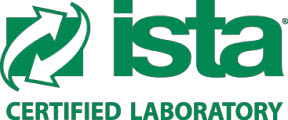Package Validation Testing
Medical device manufacturers are called upon to obtain approval on each individual medical device package. According to the ISO 11607 standard, the manufacturer must ensure the product and package system conjoin to create a complete product which performs efficiently, safely, and effectively in the hands of the user.
Package Validation Testing is vital to ensure integrity of the package’s seal. Validation will provide assurance and security that a package is sealed properly, leak-free, and secure from any number of outside contaminants. Accelerated aging should take place after the integrity of the product and package has been determined.
The main culprit for feeble package strength is the seal-sealing parameters. If a formal validation of the sealer is not carried out, the medical device manufacturer can expect failure. Packages may also lose their integrity as a result of the various events that occur during processing and /or distribution. Package Validation Testing may be used to validate that the package integrity has been maintained throughout the package’s processing, expected shelf life, and handling.
Testing includes, but not limited to, the following:
- ASTM F1886
Visual Inspection Test - ASTM F88
Peel Strength Test - ASTM F1140
Burst Test - ASTM F1929
Dye Penetration Test - ASTM F1140
Creep Test - ASTM F2096
Bubble Emission Test
What is medical device package validation testing?
Medical device package validation testing uses a series of tests to validate that the packaging of a medical device will meet regulatory requirements and is able to protect the device from hazards during distribution, storage, and use.
Package validation testing typically involves:
Integrity testing
Integrity testing verifies that the packaging will maintain sterility and prevent microbial contamination.
Physical strength testing
This type of testing is conducted to assess packaging material durability along with seal and closure strengths.
Performance testing
Performance testing evaluates how well packaging performs under conditions such as temperature, humidity, and mechanical stress.
Package validation testing services ensure compliance with the ISO 11607 standard, which states that manufacturers must verify that the product and package system conjoin to create a complete product that performs efficiently, safely, and effectively in the hands of the user.
How does medical device package validation testing work?
A series of systematic tests and evaluations are performed to verify the packaging will effectively protect the device throughout its lifecycle.
Test plan development
A comprehensive development plan will include objectives, standards and guidelines, test methods, and acceptance criteria.
Package design evaluation
This evaluation includes material selection and seal integrity.
Performance testing
Performance testing includes multiple elements, such as accelerated aging testing, real-time aging testing, and distribution simulation testing.
Environmental conditioning
The packaging is exposed to various environmental conditions to assess durability and package integrity and can include temperature and humidity testing and altitude testing.
Sterility and microbial barrier testing
Microbial barrier testing tests the package for its ability to prevent microbial contamination. Seal integrity testing evaluates the strength and integrity of the seals through methods such as dye penetration, bubble emission, or vacuum decay.
Physical testing
These tests can include tensile strength testing, burst testing, and puncture resistance testing.
Documentation and reporting
Test reports and compliance documentation are compiled to detail procedures, results, and conclusion of tests along with compliance to all regulatory standards.
Review and approval
A quality assurance review is conducted to affirm that all criteria have been met, and documentation is submitted to regulatory bodies.

